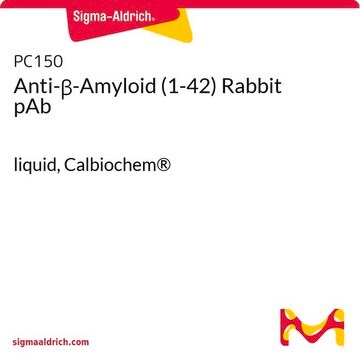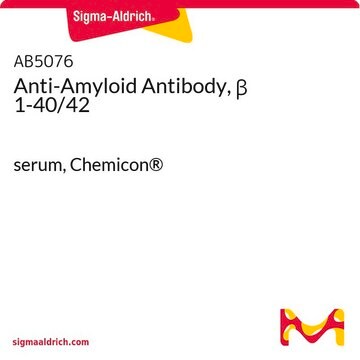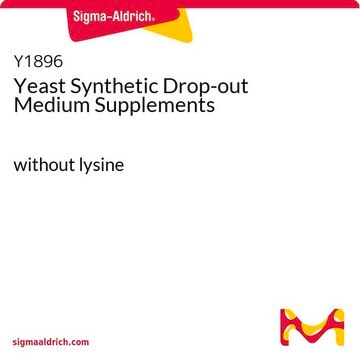A8978
Anti-β-Amyloid (13-28) antibody, Mouse monoclonal
clone BAM90.1, purified from hybridoma cell culture
Synonyme(s) :
Anti-Aβ
About This Item
Produits recommandés
Source biologique
mouse
Niveau de qualité
Conjugué
unconjugated
Forme d'anticorps
purified immunoglobulin
Type de produit anticorps
primary antibodies
Clone
BAM90.1, monoclonal
Forme
buffered aqueous solution
Espèces réactives
human
Conditionnement
antibody small pack of 25 μL
Concentration
~2 mg/mL
Technique(s)
enzyme immunoassay: 0.2-0.4 μg/mL using amyloid β-protein
immunohistochemistry: suitable
immunoprecipitation (IP): suitable
western blot: suitable
Isotype
IgG1
Numéro d'accès UniProt
Conditions d'expédition
dry ice
Température de stockage
−20°C
Modification post-traductionnelle de la cible
unmodified
Informations sur le gène
human ... APP(351)
Description générale
Monoclonal Anti β-Amyloid [13-28] recognizes the β-Amyloid peptide. The antibody epitope resides within amino acids 20-23.
Application
Immunohistochemistry (1 paper)
Forme physique
Clause de non-responsabilité
Not finding the right product?
Try our Outil de sélection de produits.
Produit(s) apparenté(s)
Code de la classe de stockage
10 - Combustible liquids
Classe de danger pour l'eau (WGK)
WGK 3
Point d'éclair (°F)
Not applicable
Point d'éclair (°C)
Not applicable
Équipement de protection individuelle
Eyeshields, Gloves
Certificats d'analyse (COA)
Recherchez un Certificats d'analyse (COA) en saisissant le numéro de lot du produit. Les numéros de lot figurent sur l'étiquette du produit après les mots "Lot" ou "Batch".
Déjà en possession de ce produit ?
Retrouvez la documentation relative aux produits que vous avez récemment achetés dans la Bibliothèque de documents.
Les clients ont également consulté
Notre équipe de scientifiques dispose d'une expérience dans tous les secteurs de la recherche, notamment en sciences de la vie, science des matériaux, synthèse chimique, chromatographie, analyse et dans de nombreux autres domaines..
Contacter notre Service technique



![Anti-β−Amyloid [22-35] antibody produced in rabbit affinity isolated antibody, buffered aqueous solution](/deepweb/assets/sigmaaldrich/product/images/167/133/003c2b30-0f73-4e7e-b498-e4d35df4d55a/640/003c2b30-0f73-4e7e-b498-e4d35df4d55a.jpg)









